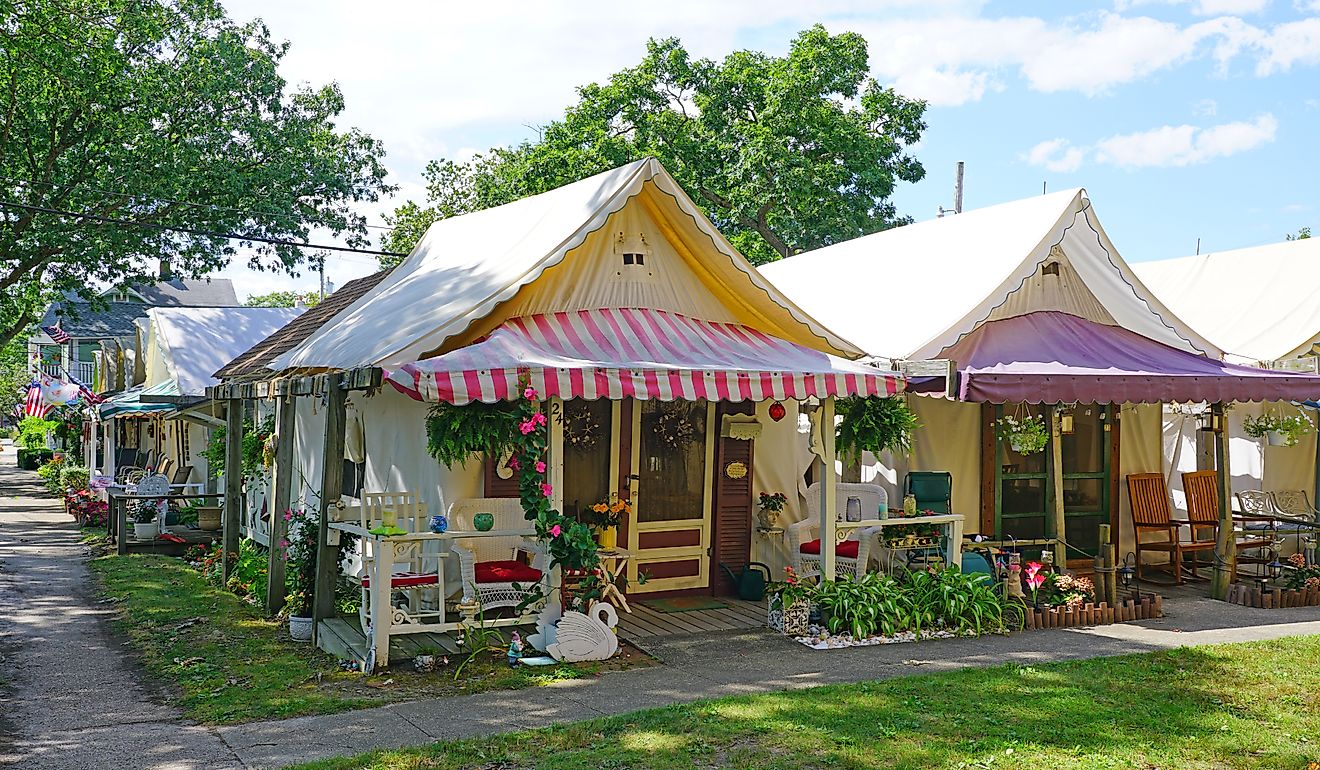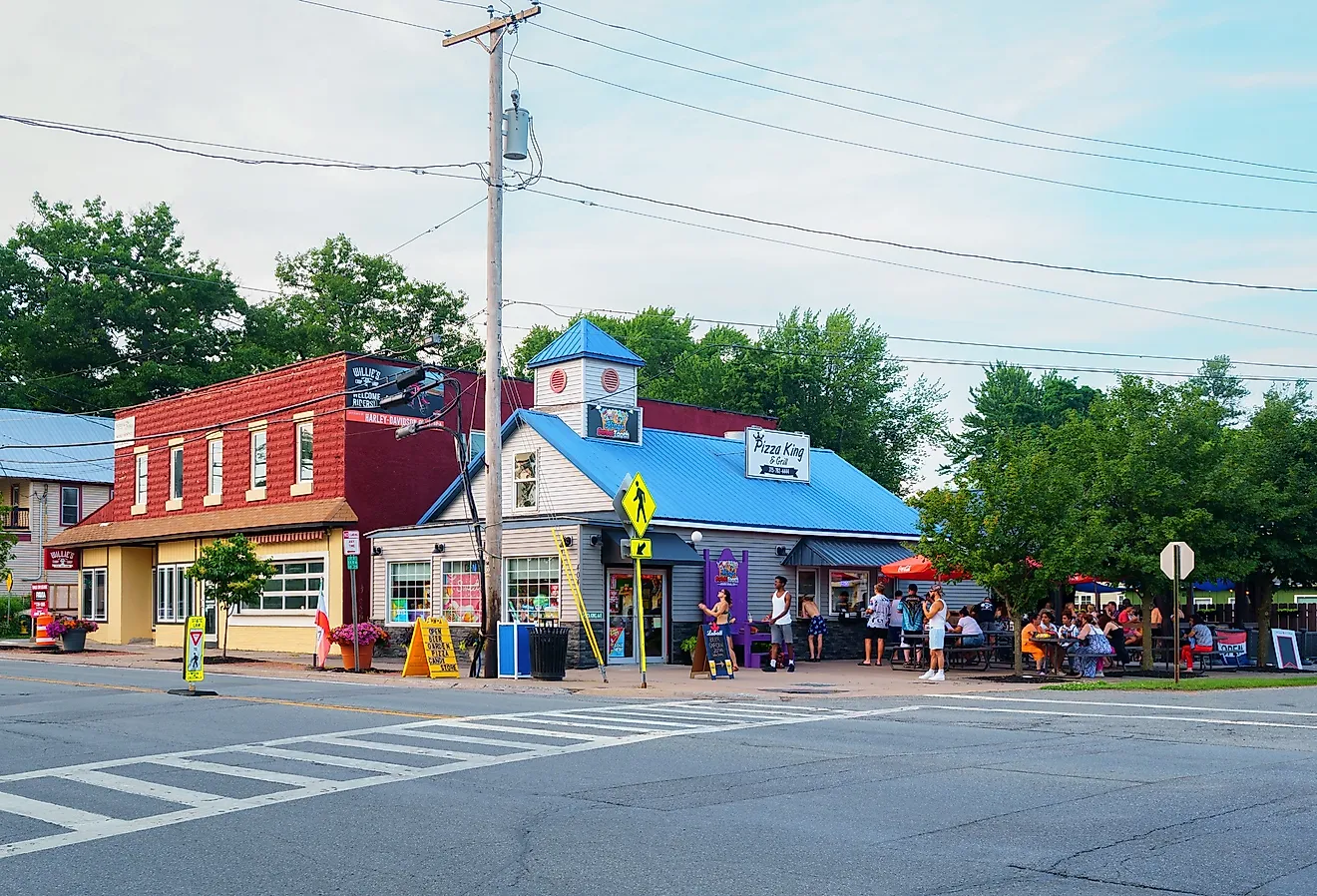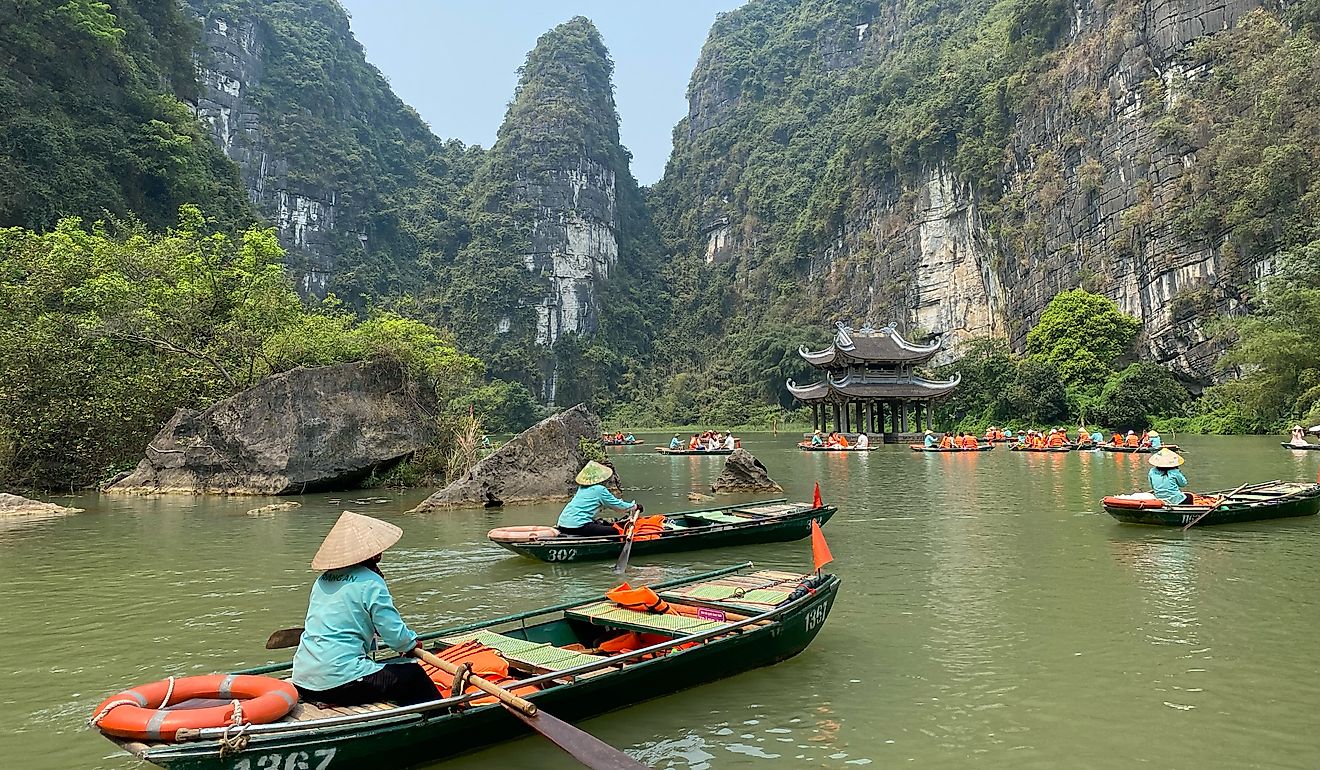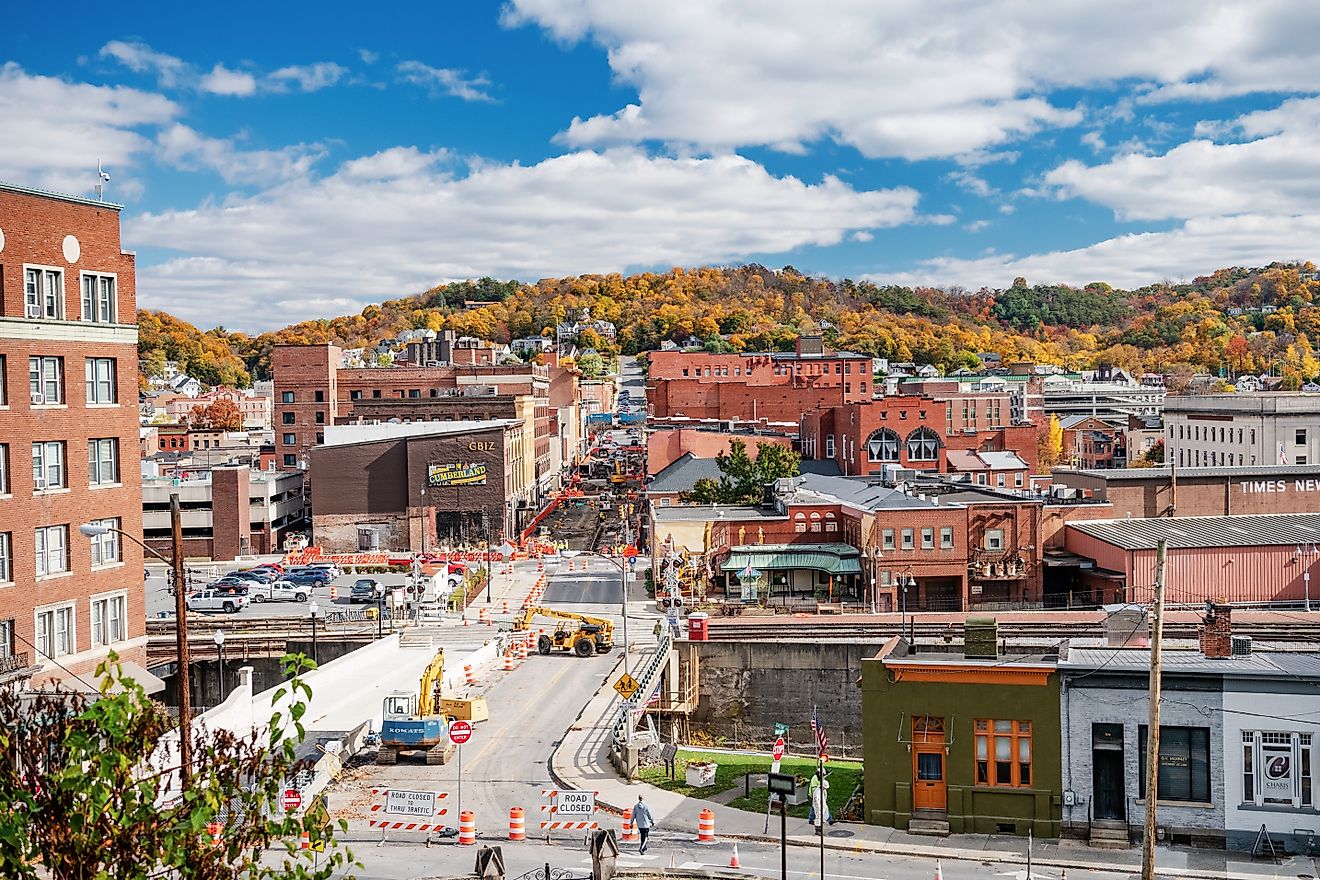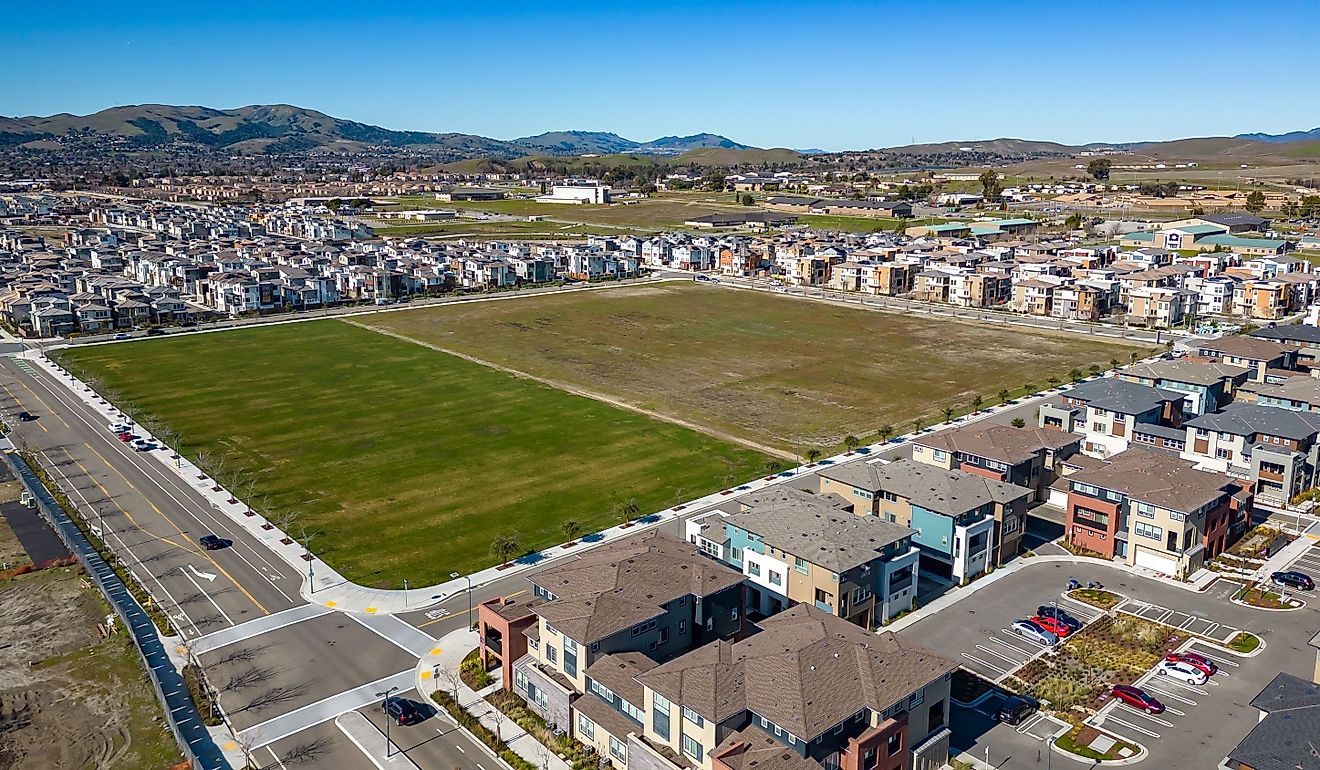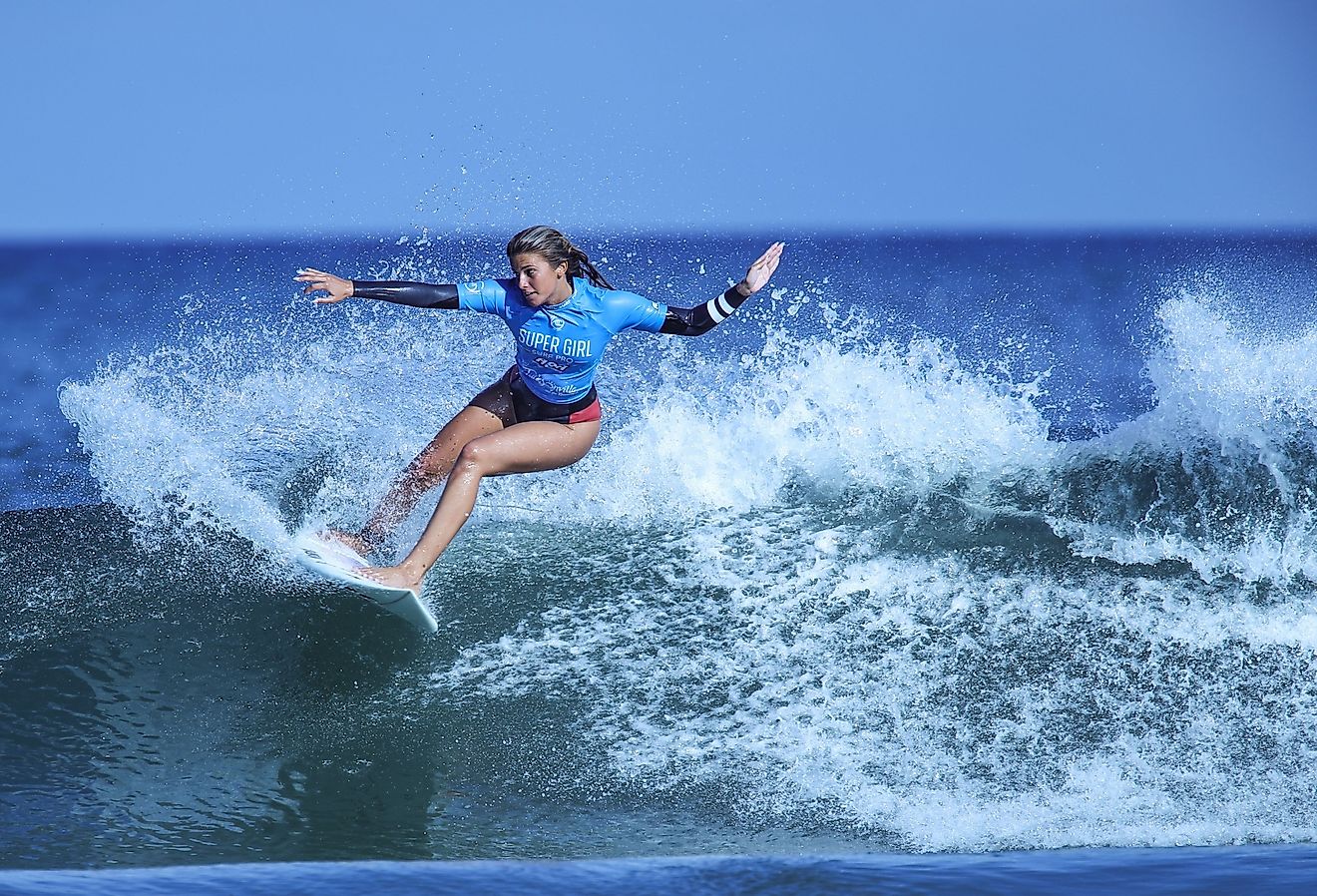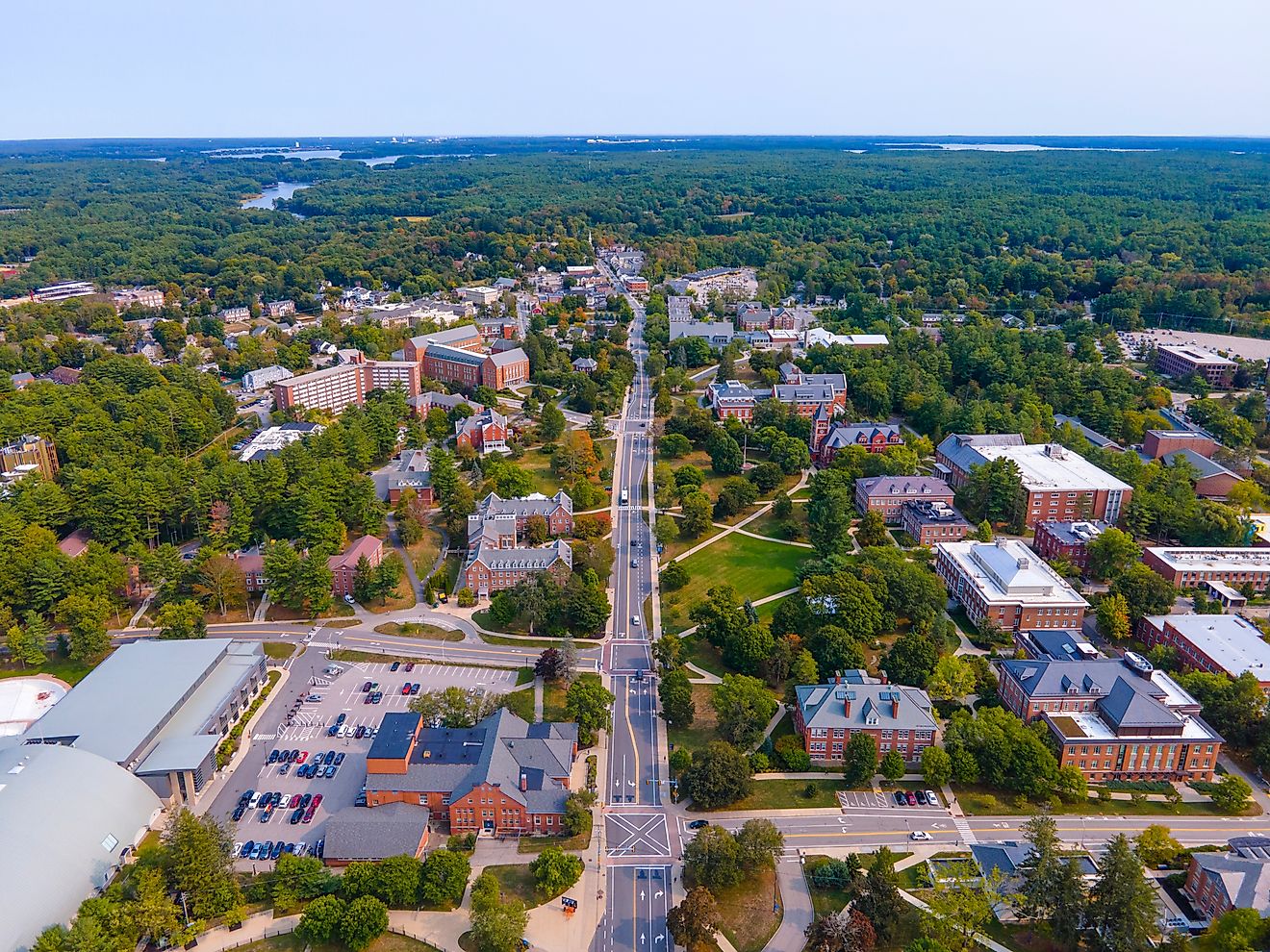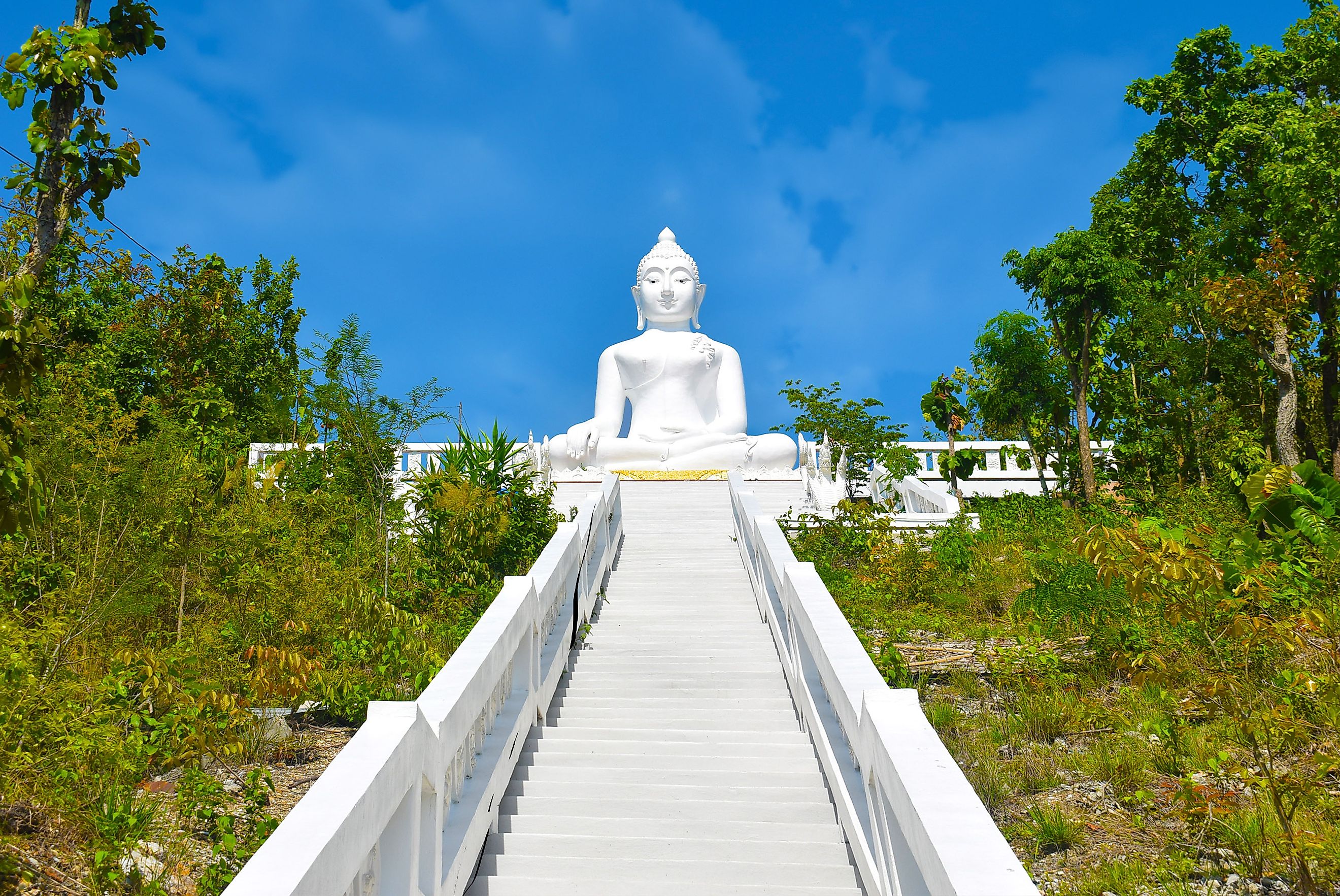
An American's Guide for Northern Thailand
Thailand attracts hordes of international tourists to its vibrant (some might say chaotic) cities and nature-immersed towns. Palpable demographics include those of nearby Asian nations, youthful Europeans indulging in a gap year, and an eclectic mix of the Commonwealth. Given the delicious food, seductive weather, novel but accessible culture, and comparative strength of the US dollar, I think Americans should seriously consider swapping out their usual Mexican vacation with a Thai itinerary. I know "The White Lotus" might have you salivating for the South, but after spending months in Bangkok, Chiang Mai, and Pai, I'm here to champion the North. Here's everything you need to know to make it happen. Let's call it an American's guide to Northern Thailand.
Best Time to Go

In terms of weather, the best time to visit Thailand is between November and March. This is the country's "winter" season, though it will certainly still feel like summer for most Americans. During this window, the rains, and thus, humidity subside and the daily highs hover in the 80s (Fahrenheit, obviously). From March until May, the temperatures soar above 100, particularly in places like Bangkok and Chiang Mai. The breaking of this heat wave is a double edge sword, as May through October (aka "wet season") sees the arrival of the southwest monsoon. With that said, downpours tend to come in short to moderate bursts (September and October see the most precipitation), so this period certainly doesn't disqualify an enjoyable vacation.
Ultimately, most tourists aim for the thick of dry season (i.e. November through February). For Americans, this window coincides nicely with the Christmas holidays and isn't far removed from Spring Break. With that said, if you want to avoid the crowds, then the trade-offs of shoulder season might be worth embracing.
Getting Around
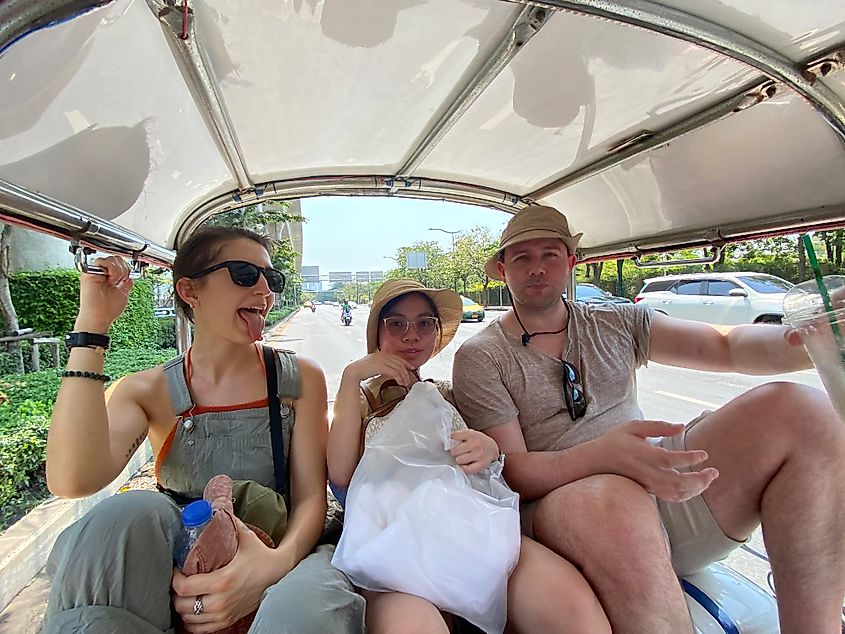
Flights
Major American airports like LAX, JFK, O'Hare, and Dallas/Fort Worth offer flights to Bangkok (Suvarnabhumi Airport) and Chiang Mai (Chiang Mai International Airport). These typically involve one or two stops and can take anywhere from 19 to 26 hours of total transit time. Since Bangkok is such a unique city, and Thailand offers regular and ridiculously cheap domestic flights (I'm currently looking at a last-minute one to Chiang Mai for $42), I recommend starting here and then shifting further north when ready. Just note that domestic flights also operate out of Bangkok's second airport, Don Mueang International Airport, so don't make the mistake that I (almost) made by reflexively summoning a car to take you to the same airport you initially landed at. This brings us to our next important topic.
Taxis and Ride Shares
Landing in a major international hub can be intimidating at the best of times, let alone when you are hopelessly lost in translation. And until you establish a point of reference for the foreign currency, it's hard to know what a ride from the airport should cost. Thai taxi drivers, like in many parts of the world, like to toss out figures to obvious tourists that, while still affordable compared to American cities, are much higher than the domestic baseline. If you fly into Bangkok, head down to the lowest level exit once you get through customs. This is where you can find metered taxis, or summon a ride share.
In Thailand, Grab, rather than Uber, is the go-top app. There are two designated Grab pickup locations; they're right next to each other, are indicated with big green, branded signage, and are well-staffed to help facilitate pickups. If you don't already have a phone plan in place then you can actually just mooch the airport Wi-Fi to secure your ride. (Note: the airport sells SIM cards at the arrival terminal, but they're way more expensive than in the city, so I would hold off if you're on a budget). I ended up using the Grab app most often and found that it was cheaper than taxis. Sometimes you can even check what the price would be on Grab, and then if a taxi driver tries to solicit you when leaving a tourist area, you can see if they'll match the price so that you can avoid the wait and still get a deal.
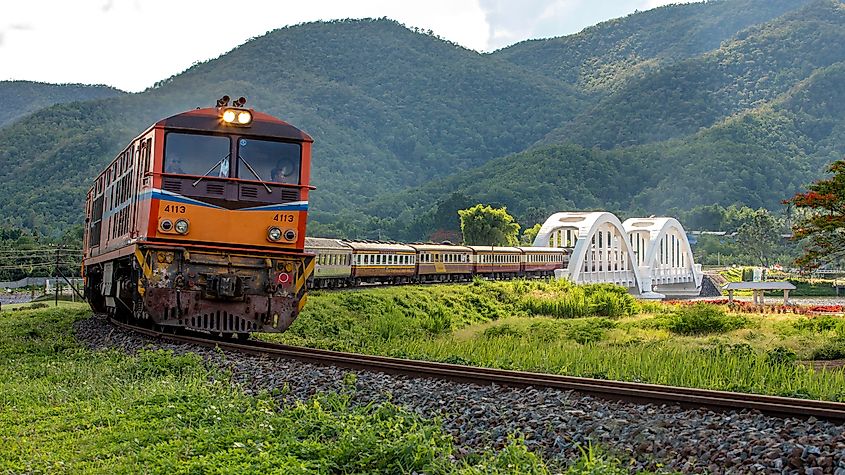
Trains
Bangkok has an excellent metro system (including a Sky Train), and a constant stream of city buses to fill in the gaps. Typically, folks at the BTS and subway stations speak English well enough to assist with tickets. (Note: In my experience, there are self-serve machines, but for some reason they only take coins ... which you'll never have enough of.) And once you're on board, the digital displays and station-by-station announcements let you know when you need to get off. It might seem daunting at first, but you'll get the hang of it in no time. Once you get to Chiang Mai (which can also be done by train if you're curious about what an overnight journey is like) and beyond, you'll have to work in other methods of transportation.
Buses and Shuttles
In Thailand, getting to smaller towns, national parks, and other tourist attractions tends to be done by bus, or more specifically, shuttle buses. Many hotels and hostels have their own affiliated companies, so it's usually sufficient to ask your host about arranging a ride. Alternatively, those travel agency/tour shops (which are everywhere in Chiang Mai) can hook you up all the same (they tend to use the same operators anyway). In any case, the set up isn't glamorous, and they usually fill every available seat, but it gets the job done, and for quite cheap.
Tuk-Tuks and Motorcycles
Lastly, no trip to Thailand is complete without at least one ride on a tuk-tuk or motorcycle. Tuk-tuks can be acquired anywhere that tourists roam, or at random intervals in between (you can't miss them). They tend to charge more (again, it's all relative because everything is much cheaper than in the States) and take longer than Grabs, but it's more about the novelty of feeling the air whizzing through your hair as you zip around the congested streets: The old "do it for the story" approach.
As for motorcycles, there is a point-to-point shuttle system in Bangkok (I used this constantly to get to the Sky Train station from my Airbnb) and cheap rentals are offered at designated shops or through some guesthouses. Just make sure you have an international license. People will rent to you without one, but you can also get a pretty decent ticket if a cop decides to pull you over and check.
Where To Stay
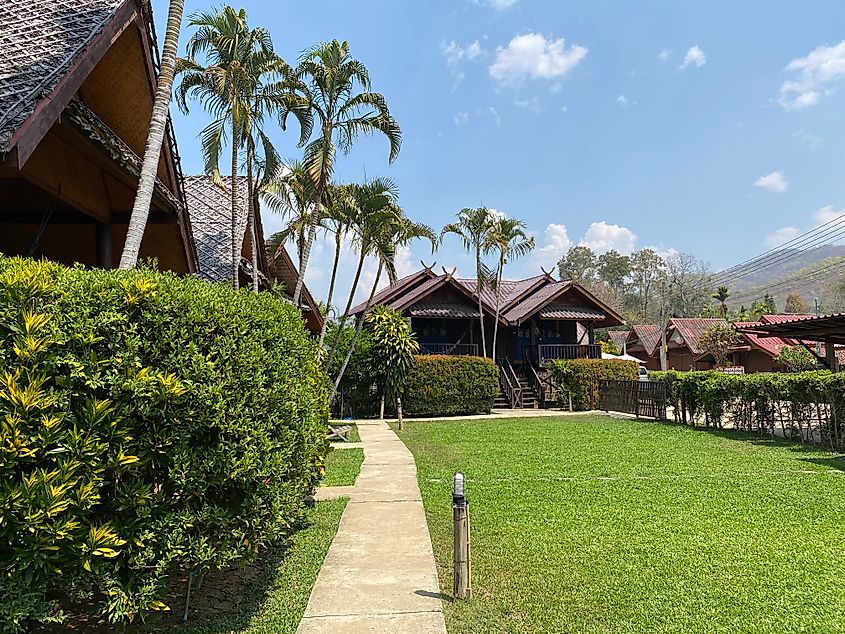
Whatever your preference for accommodations, you'll be able to find it in Northern Thailand — often for a fraction of the price of even the most basic American motel. From swanky sky bar hotels in Bangkok, to backpacker hostels in Chiang Mai, to rustic bungalows in Pai, and authentic guesthouses just about anywhere; you will never be left scrambling for a bed. I like to use Airbnb and Booking.com, but it's also fun (and even advisable) to simply show up, walk around, and see what's available. There are loads of places that don't appear on the common booking sites but are just as good (if not better) than the ones that do. If you know you'll be in a particular area for a while, perhaps start off with a multi-night booking, get a feel for the area, and then decide if you want to extend your stay or shift up the road to that cool spot with the pool and free breakfast.
Managing Money
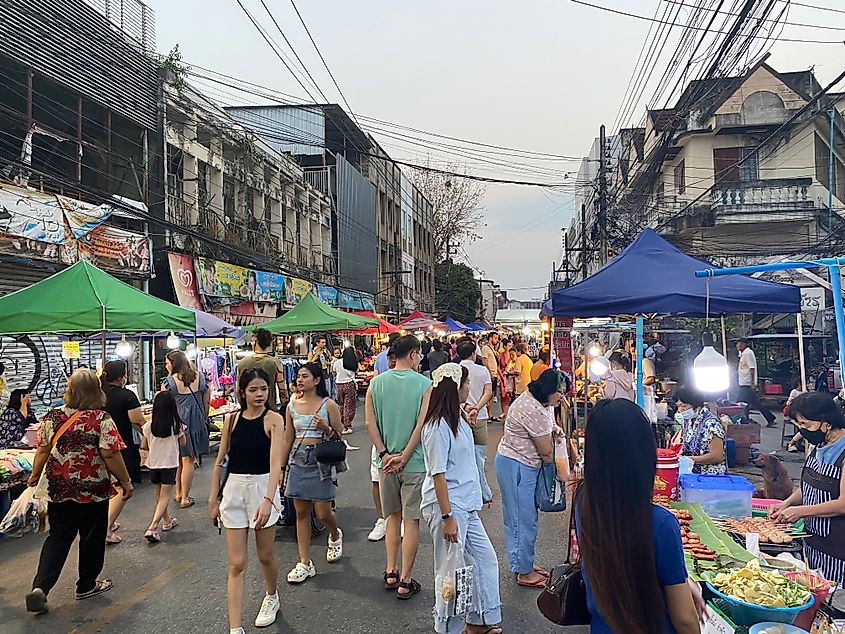
Currency
In Thailand, the currency is Thai Baht (THB). On any given day, one US dollar is equivalent to about 34 baht. I suggest simply rounding up to 35 or even down to 30, so that you can quickly calculate a rough estimate of what things cost as you invariably sift through weekend markets and buy food from busy pop-up vendors. Since Asia is a cash-centric continent, I like to keep a reasonable float casually in my pocket (for quick access) and then a solid backup supply secured somewhere else on my body. Either way, you'll need to make your peace with mostly reserving credit card purchases for higher-end restaurants and hotels — and even then, expect a surcharge for doing so.
ATMs
If I had to pick one gripe with Thailand, it's that every ATM withdrawal comes with a 200-baht service fee (i.e. a bit over $5). It doesn't matter if it's a big bank, or a singular machine outside of a bar on Khao San Road: 200 baht. That may not sound like a big deal, but it adds up. So if you plan on staying for a while, it might be best to make each withdrawal an impactful one. But if it's a shorter stay, then the money burned on service fees for several smaller withdrawals will probably end up being similar to what you'll lose exchanging your leftover baht back to American moolah. The epitome of "trading dollars," I suppose.
Potential Issues and Best Practices
As at home, so too abroad. In other words:
- Shield the keypad as you type in your PIN at an ATM (not just from potential onlookers, but from possible scanners implanted above).
- If you do use your card at a business, make sure you keep it in your possession at all times.
- Beware of pickpockets, especially on transit and in touristy areas. When going out for extended periods, I always choose pants/shorts that have pockets with zippers or buttons in which to secure my wallet or bigger bills (again, I always like to assign a quick-access pocket to hold a smaller wad of cash — an amount that I can live without if it does happen to get swiped, but also something sufficient for markets and street food).
- It's hard to ship replacement cards to Thai addresses, so split up your assets so that you always have something to fall back on. If you're staying in a room by yourself, or if you have a locker in your hostel, leave the bank card behind until it comes time for ATM withdrawals. I also like to hide some "just in case" cash somewhere sneaky in my luggage.
- If you do lose your card, send yourself a Western Union transfer before you call to cancel, and send yourself enough cash to coast for a couple of weeks. Bangkok and Chiang Mai have such services, so if you're in a smaller town (such as Pai), you'll have to make a day-trip excursion (hence the "just in case" cash) to get yourself back on track.
- You'll need your passport to exchange currencies or collect money transfers. In fact, bring a second piece of I.D. because they can be very pedantic at these institutions. And make sure any forms you fill out have your full legal name (as they are not able to connect the dots with omitted middle names).
Tipping
Thai tipping culture is nothing like what you see in the States. In fact, it's not expected in the first place. If you're feeling generous, you can consider rounding up informal purchases (i.e. the "keep the change" method), and for restaurants that don't add a "service charge," or a nice hour-long massage, you might add 10% to 15%. Everything falls somewhere in that range and need not be stressed about.
The Culinary Experience
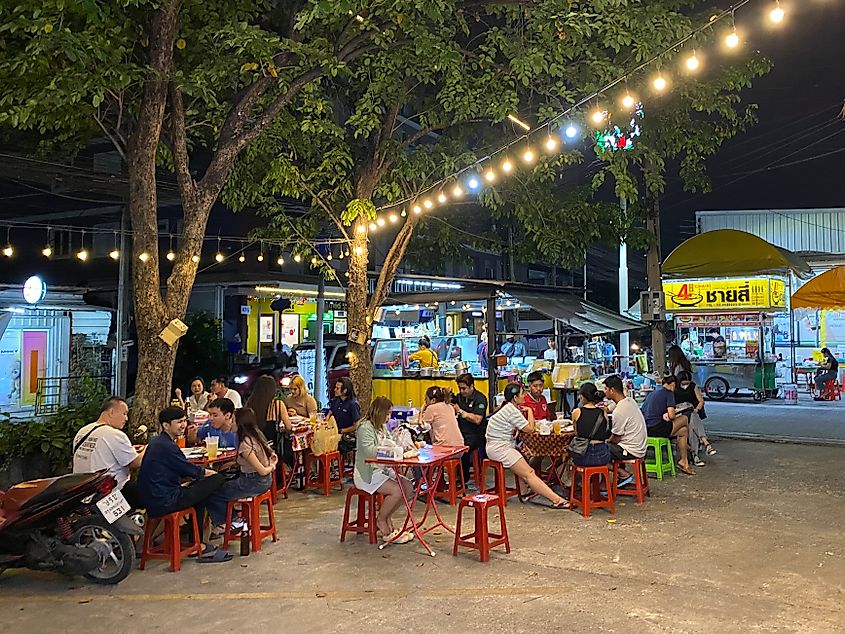
The food in Thailand is whatever you need it to be: spicy and experimental, or middle-of-the-road Pad Thai; barbequed bugs, or fresh fruit; cheap eats on the side of the road, or Michelin-star restaurants.
Street Food
This is where we get into "I'm not a doctor" territory. I'm aware of the justifiable apprehensions around street food, and the need for everyone to establish their own comfort level, but all I can say is that indiscriminately chowing down is probably my favorite Northern Thailand activity. Yes, I have gotten food poisoning (though, that was actually in Southern Thailand), and I've had some low-key stomach issues here and there, but overall, the juice is well worth the squeeze. Simply put, Thai street food explodes with flavor. Sometimes it's satisfyingly simple (such as street meat), and sometimes it's a cacophony of spices and textures (such as tom yum or som tum). In any case, it's always unbelievably cheap. I'm talking $2 to $10 for a stuffed-to-the-brim experience. Personally, I like to mix and match. Get a little stick of something from Stall A, then do the sit-down soup at Stall B, and finish it off with some fresh fruit or ice cream at Stall C.
I can already hear the inevitable question coming through my computer screen: Is it spicy? Yes! Of course it's spicy! It's supposed to be spicy. If it's not spicy then it's not authentic. Look, I'm of British/Scottish descent and I never even so much as looked at a chili pepper until long after I started traveling. But if I can come around to it, then so can you. Wear an old shirt and sweat like the River Nile if you have to, but if you don't climb that Scoville scale at least a few times, you'll regret it. Sure, most proprietors know the phrase "not spicy," and will even prompt fair-faced tourists for this option. But I would encourage you to dig deep and do your inner Bourdain proud by accepting as many dishes as you can as they are intended. Just make sure to have a steady supply of beer or coconut water on hand.
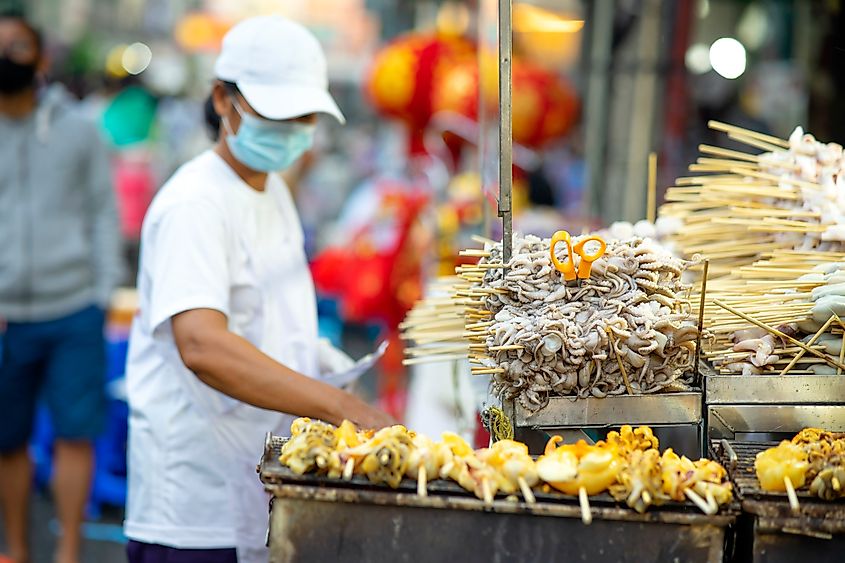
Restaurants
As fun as the street food mayhem is, it's also nice to plunk down at a restaurant and get a better sense of what it is you're consuming, possibly in the comfort of an air-conditioned room. In Northern Thailand, you'll never be far from an expat eatery. You know, the ones with pictures of food all over the street-facing facade. And in particularly tourist centric zones (like Pai's Walking Street), you'll be able to find lots of Western comfort foods too (no judgement here, I like to mix in a pizza or veggie burger once in a while). But Northern Thailand also specializes in ambiguous, hole-in-the-wall spots. Sometimes they're basically part of someone's living room and don't even have a menu (just one awesome, du-jour dish). You can also get as fancy as you want with it. The one and only Michelin restaurant I've ever eaten at was in Bangkok (i.e. Baan Tepa Culinary Space) and it was worth every penny (or rather, ever hundreds of dollars). The menu was diverse, exquisite, and tied into the history of various regions (all of which was well articulated by the English-speaking staff).
Groceries
Eating out in Thailand never really gets old, but if you find yourself immersed in a longer stay then you may wish to adopt some everyday doings like shopping for groceries. In Bangkok, there are supermarket chains such as Lotus, but once you shift further north, you can lean on local mini-marts, 7-Eleven (they're everywhere), pop-up markets (especially on weekends), and even mobile vendors who either post-up at regular intervals in dependable places or drive around calling out their specialties. One way or another, you won't go hungry during your trip.
Coffee
If you're worried about getting your caffeine fix, fear not, for good coffee can be found all over Thailand. You might have to surrender the super-sized portion, but the quality is still there. Hotels tend to provide drip coffee, there's always a Starbucks to be found in bigger cities, and the cool local cafes all have espresso machines. A standard americano should cost you between 40 baht and 100 baht ($1 to $3).
Entertainment and Leisure
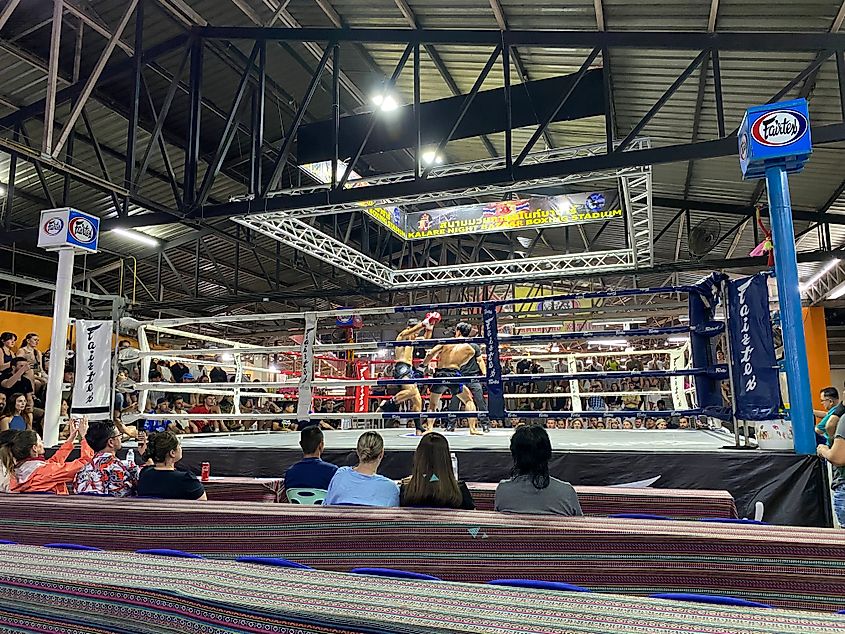
Markets
I've referenced markets a few times now. Basically, no matter where you go in Northern Thailand, you're going to come across large collections of pop-up vendors, usually at night and especially on weekends. Here are a few notables to aim for.
Bangkok: Weekend Market, Train Night Market, and the Khlong Lat Mayom Floating Market (or Damnoen Saduak Floating Market if you don't mind the side trip).
Chiang Mai: Wualai Walking Street (Saturday Nights), Kalare Night Bazaar, Warorot Market, and many places around the Old Town's perimeter.
Pai: The Pai Walking Street goes strong every night.
Massage
Massage parlors are a dime a dozen in major cities and touristic towns like Pai. For anywhere from 200 baht to 500 baht ($6 to $15) you can get various types of full-body treatments. The Thai massage is obviously a classic, but if you're not into deep tissue or chiropractic techniques, then you can simply opt for a relaxing oil massage or aromatherapy massage. As an athlete, a budget backpacker, and a digital nomad, I take full advantage of these places to work out the knots in my muscles and kinks in my tech-neck.
Muay Thai
Another novel and almost-mandatory Northern Thailand experience is attending a Muay Thai event (i.e., the national sport). Though a thrilling and often brutal combat sport, Muay Thai also invokes a lot of tradition and reverence. You will likely see ritualistic ceremonies performed before the opening bout, and it's amazing to see how the fighters can go from bowing to one another, to fierce punching and kicking, and then immediately back to bowing. I don't have a huge appetite for martial arts, but I'm glad I got to see the MBK Center Fight Night (free admission the first and last Wednesday of every month), and the show at Chiang Mai's Kalare Boxing Stadium (every Monday, Wednesday, Friday, and Saturday night).
Marijuana
To keep the M-alliteration going one further, it is worth mentioning that Thailand was the first country in Asia to legalize medicinal cannabis, and recreational use has been decriminalized, although it's not technically legal. I'm neither condoning nor condemning, but in just a few years, this industry has visibly (and olfactorily) taken over the streets.
Tours
Once you get up to Chiang Mai, the tour engine really kicks into gear. There are countless agencies to solicit, and every hotel/hostel will have posters and brochures suggesting half-day, full-day, and multi-day outings to nearby national parks, animal sanctuaries, cultural landmarks, and for you spiritual wanderers, local meditation retreats at one of the many Buddhist temples (I recommend Pa Pae Meditation Retreat, just outside of Chiang Mai).
Safety and Hygiene
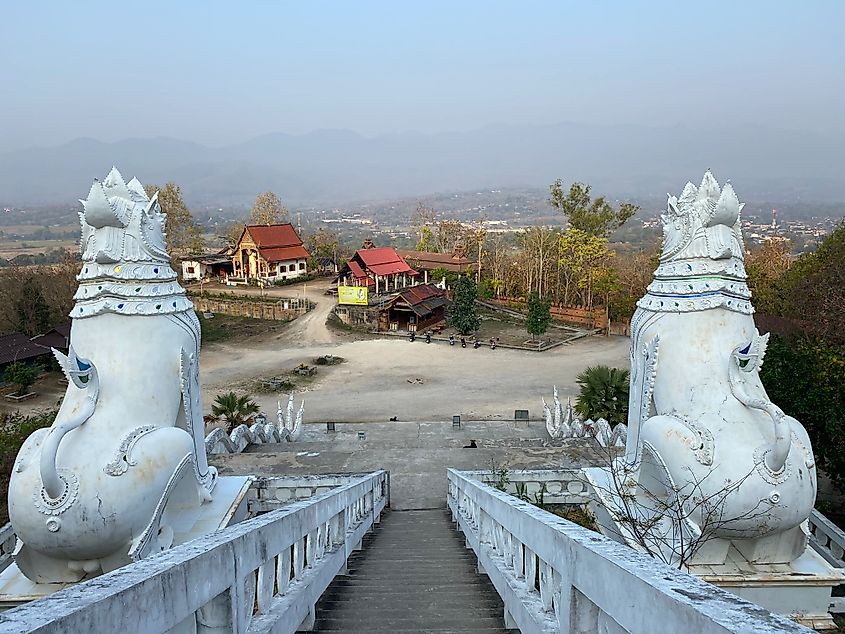
As a Canadian, I always get a kick out of checking our government website for travel advisories. Almost every country (including, dear reader, the United States) comes with a list of dire warnings leading to a "Do Not Travel" conclusion. As someone who has visited over 40 countries across five continents, I think Thailand is perfectly safe. With that said, here are a few sensible considerations. Note: specific advice regarding medical interventions and insurance policies are beyond the scope of this article. I'll leave those to you to sort out with your doctor and local providers.
2025 Earthquake
Let's start out with the most topical issue. On March 28th, 2025, a 7.7 magnitude struck Mandalay, Myanmar, and was felt throughout Northern Thailand. As of the writing of this article, 3,471 people have died in Myanmar (with hundreds still missing), and 24 have been reported dead in Thailand, 17 of which lost their lives when an under-construction skyscraper collapsed in Bangkok. There is no way to frame this other than a severe tragedy, and I wish the people of both nations a speedy recovery. But since natural disasters will continue to occur all around the world, I do not feel inclined to adjust my travel schedule. Yes, I was in Northern Thailand mere days before the earthquake hit, but I was also in the Los Angeles region shortly before the wildfires broke out. There are never any guarantees when it comes to nature.
Air Quality
Big Asian cities tend to rank as the most polluted in the world. Northern Thailand does dip in and out of this unfortunate list, but the situation is exacerbated come spring, when rice farmers burn off their crop residue. When I was there last Feb/March, there were many days in which the skyline was shrouded in smog (or just straight up smoke), but then the winds would shift, and the next day would be perfectly clear. I feel for the residents who have to bear the long-term health effects, but for short-term travelers, the air quality will likely be more of an annoyance than anything else (asthmatics aside). I had to adjust my exercise routine here and there, and my girlfriend experienced some headaches in the morning, but other than that, it was nowhere near as bad as some sources warned.
Toilets
Americans are averse to bidets, and I have no idea why. We use water to properly clean everything, only to negate it when it comes to the grossest part of our body. Imagine if a bird pooped on your arm. Would you be satisfied to just wipe it with a tissue? No! You'd go to the bathroom and thoroughly wash it. All of this is to say that in Thailand, you have to make some adjustments to your toilet routine.
When you walk into pretty much any bathroom, even in the fanciest of hotels, you'll see a hose beside the toilet. This is what you're expected to use after you've done your business. Sometimes (but not always) there will be toilet paper provided, but this is for drying purposes only. If you're unwilling to make the adjustment, know that you cannot flush toilet paper (or any other sanitary products) down the toilet, because the pipes are not set up to handle it. Instead, everything has to be disposed of in the garbage bin (all the more reason to use the hose and just leave the toilet paper for drying). There might be an awkward learning curve at first, but by the time you fly back home, you'll have a hard time returning to the less hygienic American way.
Scams
We already covered petty theft in the Money section. Just remember not to put all your eggs in one easily swiped basket. Otherwise, about the worst thing that will happen is overpaying your taxi driver, or spending double what you should on those tourist pants with the elephants all over them. A bit of haggling can be done here and there, but a lot of the vendors just have hard and fast pricing these days.
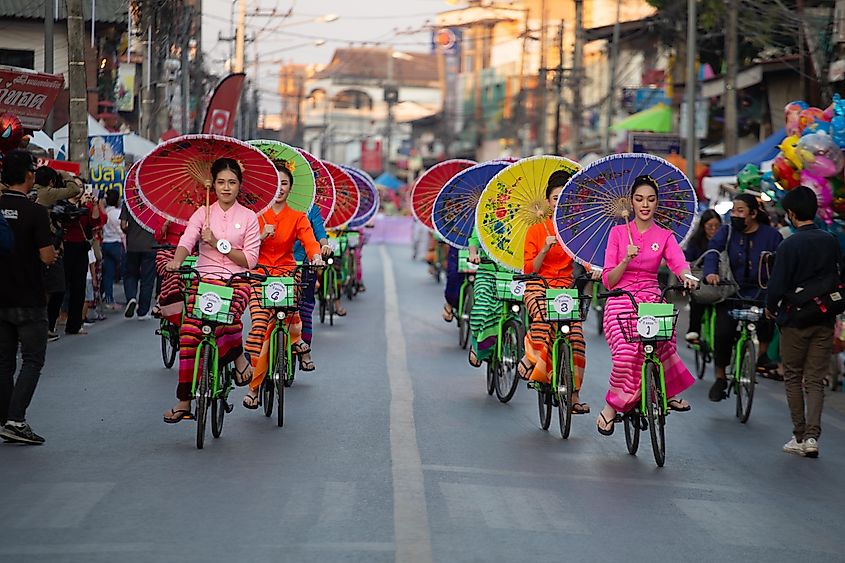
Traffic
Asia is pretty notorious for frenetic traffic, and Northern Thailand (isolated rural areas notwithstanding) is no exception. It's best to assume an active role as a pedestrian. Always look both ways (don't rely on the prescribed direction of flow) and use hand gestures to let motorcycles know if you expect them to brake or pass on by as you let up your own crosswalk pace. Thankfully, Bangkok has pedestrian overpasses, and Chiang Mai has a decent number of crosswalks, but even still, walking around Northern Thailand is a bit of a sport. Expect to be intimidated at first, but nonchalant about it by the time you leave.
Injuries
Speaking of motorcycles, don't be another dumb data point on the Western tourist stat sheet. I saw a video the other day captioned "Tell me you're in Thailand without telling me you're in Thailand," and it was simply a series of white people with bandaged knees and tensor-wrapped ankles. Recall, motorcycle/scooter rentals are everywhere, and they really are an authentic and effective way to get around, but they can also be dangerous if you don't know what you're doing (or if you're just driving irresponsibly).
Speaking of inebriation, the party crowd needs to be wary of all the usual alcohol and drug stuff. Stick together, be mindful of which drinks you accept, and if you're going to experiment, come up with a plan in advance. One otherwise bright morning in Pai, I came across a KO'd French tourist, body contorted on the hot concrete in what looked like an overdose. Paramedics were able to revive him, at which point he immediately rolled a spliff. This leads me to my final point.
A Little Bit of R-E-S-P-E-C-T
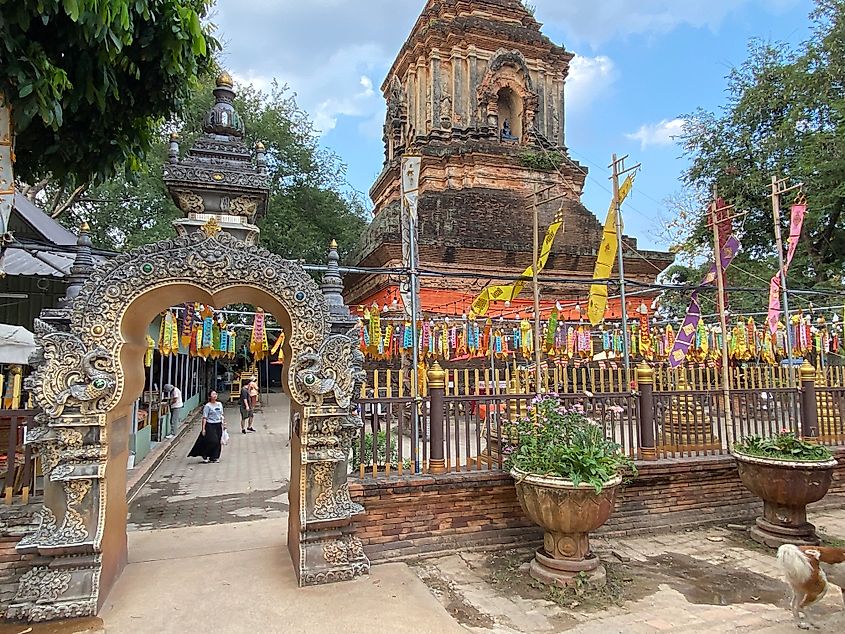
Thai people are peaceful, friendly, and fun-loving, but they are also modest, and for the most part, practicing Buddhists. The further away you get from big cities, the more conservative the populations become. Thus, a bit of respect, courtesy, and rule following goes a long way to preserve the reputation of your fellow Western travelers. If I could leave you with three suggestions, they would be:
- Learn a few Thai words before your trip. Hello (sawasdee), thank you (kap kun), and your gender-specific phrase that will be attached to everything (i.e. ka for women and krap for men) go a long way.
- Dress modestly in temples and dynastic buildings (i.e. long pants, or at least not booty shorts, and t-shirts rather than tank tops). Also be mindful of the public expectations in different places. For instance, in Pai, there were signs requesting everyone to keep their shirts on while walking around (which the bros and bikini girls regularly ignored), and to not drink or smoke weed in the streets (which the same parties promptly disregarded).
- Understand that the service industry is much different in Thailand than your standard Applebee's. It might take longer, miscommunications might occur, and not every dietary request can be accommodated (or even understood). So don't show up hangry (just get a sliced mango from the street vendor first) and try to approach each experience with levity and an open mind. After all, you're on vacation!
Parting Thoughts
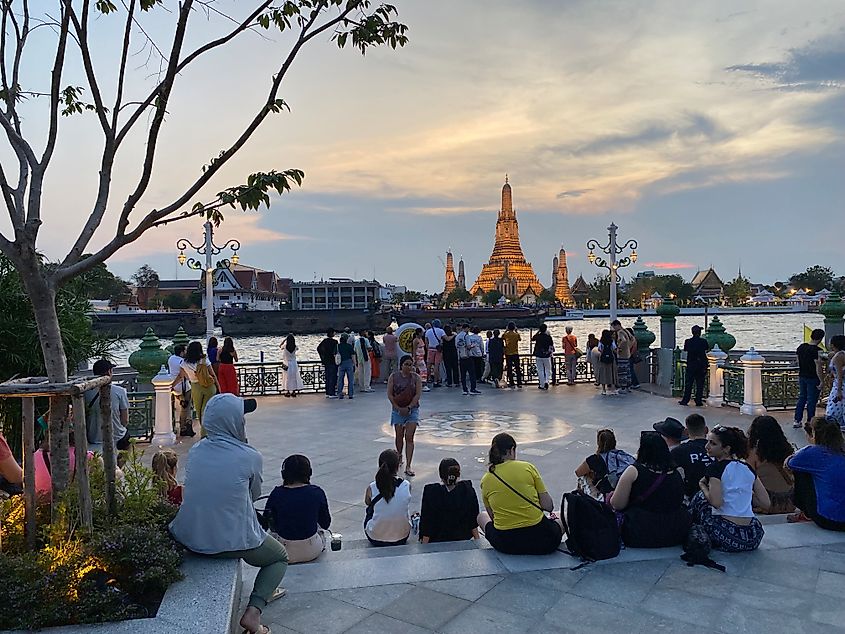
Northern Thailand is safe, exciting, and totally different from standard American holiday destinations. If you're looking for delicious food, tropical climates, friendly people, and fish-out-of-water experiences that ground you in the global community, then you've found the source of your next adventure.

